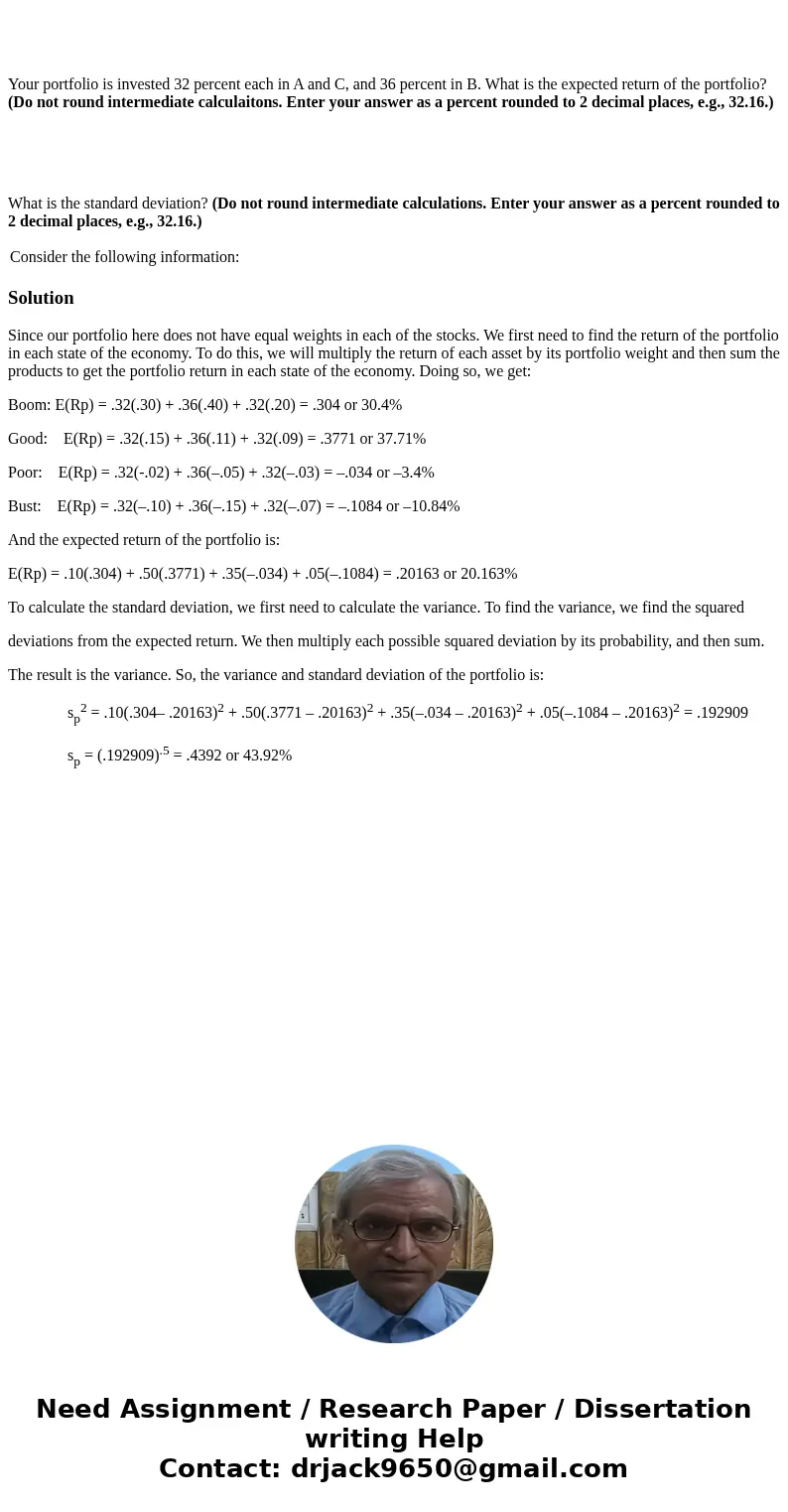Your portfolio is invested 32 percent each in A and C and 36
Your portfolio is invested 32 percent each in A and C, and 36 percent in B. What is the expected return of the portfolio? (Do not round intermediate calculaitons. Enter your answer as a percent rounded to 2 decimal places, e.g., 32.16.)
What is the standard deviation? (Do not round intermediate calculations. Enter your answer as a percent rounded to 2 decimal places, e.g., 32.16.)
| Consider the following information: |
Solution
Since our portfolio here does not have equal weights in each of the stocks. We first need to find the return of the portfolio in each state of the economy. To do this, we will multiply the return of each asset by its portfolio weight and then sum the products to get the portfolio return in each state of the economy. Doing so, we get:
Boom: E(Rp) = .32(.30) + .36(.40) + .32(.20) = .304 or 30.4%
Good: E(Rp) = .32(.15) + .36(.11) + .32(.09) = .3771 or 37.71%
Poor: E(Rp) = .32(-.02) + .36(–.05) + .32(–.03) = –.034 or –3.4%
Bust: E(Rp) = .32(–.10) + .36(–.15) + .32(–.07) = –.1084 or –10.84%
And the expected return of the portfolio is:
E(Rp) = .10(.304) + .50(.3771) + .35(–.034) + .05(–.1084) = .20163 or 20.163%
To calculate the standard deviation, we first need to calculate the variance. To find the variance, we find the squared
deviations from the expected return. We then multiply each possible squared deviation by its probability, and then sum.
The result is the variance. So, the variance and standard deviation of the portfolio is:
sp2 = .10(.304– .20163)2 + .50(.3771 – .20163)2 + .35(–.034 – .20163)2 + .05(–.1084 – .20163)2 = .192909
sp = (.192909).5 = .4392 or 43.92%

 Homework Sourse
Homework Sourse